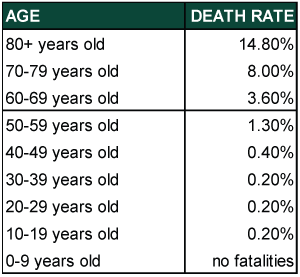From people who monitor media for a living – a summary of reporting
Elisabeth Dellinger and Todd Bliman:
“…Interviews with professionals uniformly agree on this point. If you use basic math and simply divide the number of deaths by the total number of identified cases, you may think the death rate is 3.4%. But the trouble with this is, again, identification. As Tom Frieden, former director of the US Centers for Disease Control (CDC), put it, the 3.4% rate “is certainly an overestimate.” The reason: Limited testing means many mild cases went unidentified. At a panel discussion Friday on Capitol Hill, Johns Hopkins’ Dr. Tom Inglesby stated that roughly 80% of known cases were mild. So mild that patients recovered with no hospitalization or medical intervention. (Some 15% did need hospitalization and 5% critical attention.) Many others likely didn’t even know they had it.
This means we don’t have the right denominator to calculate the death rate. In South Korea, where testing has been more aggressive, Dr. Inglesby noted the death rate was 0.6%. Frieden told Bloomberg reporters he expected the death rate to eventually hover around 1%. Now, that is speculation to an extent, but it is educated speculation that seems logical given the backdrop. That puts the death rate higher than influenza, which CDC estimates killed an average 0.14% of people who contracted it from the 2010/2011 flu season through 2017/2018.[i] But it is far lower than mortality rates tied to 2003’s Severe Acute Respiratory Syndrome and other similar outbreaks…”


